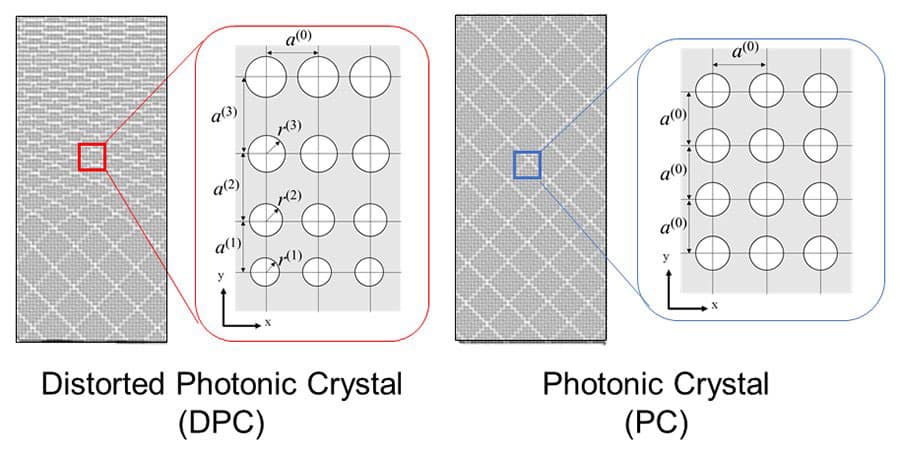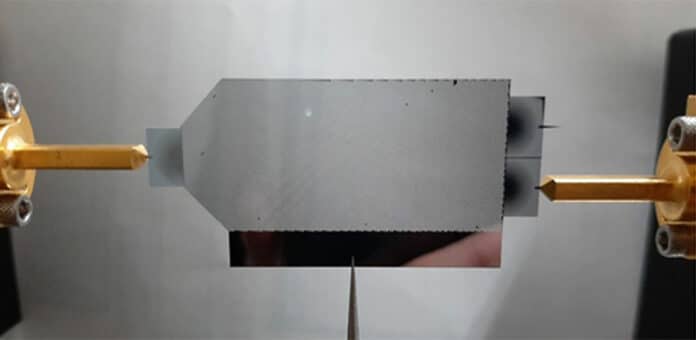According to Albert Einstein’s general theory of relativity, the course of electromagnetic waves, such as light and terahertz electromagnetic waves can be altered by gravitational fields. Recently, scientists theorized that it is possible to create pseudogravity by intentionally deforming crystals in the lower normalized energy (or frequency) zone.
A collaborative group of researchers has explored whether lattice distortion in photonic crystals can produce pseudogravity effects. They have manipulated the behavior of light as if it were under the influence of gravity.
As ‘traffic controllers’ for light inside crystals, photonic crystals’ special features allow for manipulating and controlling light behavior. They are built by repeatedly arranging two or more different materials, each with a unique capacity to interact with and slow down light. Additionally, photonic crystals have shown adiabatic changes that cause pseudogravity effects.
By introducing lattice distortion, which gradually distorts the regular spacing of elements, protonic crystals’ grid-like structure was broken. This altered the crystals’ photonic band structure, causing a curved beam trajectory in the medium that resembled a light beam traveling past a huge astronomical object like a black hole.
In particular, they used terahertz waves and a silicon-distorted photonic crystal with a primal lattice constant of 200 micrometers. The deflection of these waves has been convincingly proved through experiments.

Professor Kyoko Kitamura from Tohoku University‘s Graduate School of Engineering said, “Much like gravity bends the trajectory of objects, we came up with a means to bend light within certain materials.”
Associate Professor Masayuki Fujita from Osaka University said, “Such in-plane beam steering within the terahertz range could be harnessed in 6G communication. Academically, the findings show that photonic crystals could harness gravitational effects, opening new pathways within the field of graviton physics.”
Journal Reference:
- Kanji Nanjyo, Yuki Kawamoto, Hitoshi Kitagawa, Daniel Headland, Masayuki Fujita, and Kyoko Kitamura. Deflection of electromagnetic waves by pseudogravity in distorted photonic crystals. Physical Review A. DOI: 10.1103/PhysRevA.108.033522
